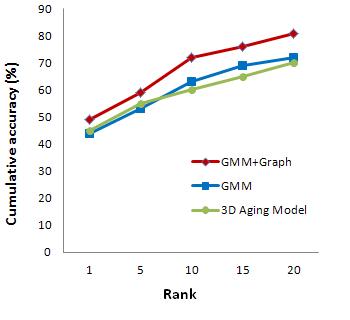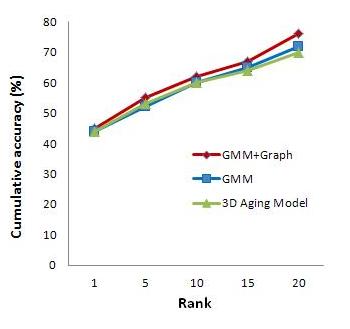Age Invariant Face Recognition Using Graph Matching
People: Gayathri Mahalingam Dr. Chandra Kambhamettu
Age Progression in Human faces
- Facial aging effects are manifested in different forms in different age groups such as shape changes in children and texture changes in adults.
- Both biological and non-biological factors contribute towards facial aging effects.
- Face recognition systems are sensitive to illumination, pose variations, expressions, etc.
Problem Statement
Given an image of an individual at a specific age,
- How accurate the system can recognize the individual from a gallery of age separated images?.
- How does age progression affect the recognition performance?.
Abstract
In this research work, we present a graph based face representation for efficient age invariant face recognition. The graph contains information on
the apperance and geometry of facial feature points. An aging model is learned for each individual and a graph space is built using the set of feature descriptors extracted from each face image. A two-stage method for matching is developed, where the first stage involves a Maximum a posteriori solution based on PCA factorization to efficiently prune the search space and select very few candidate model sets. A simple deterministic algorithm which exploits the topology of the graphs is used for matching in the second stage. The experimental results on the FGnet database show that the proposed method is robust to age variations and provides better performance than existing techniques.
Results

Feature Extraction Results


Pose correction using AAM

CMC Curve for images in age range [18, 69]

CMC Curve for images in age range [0, 69]
Related Publication
- G. Mahalingam and C. Kambhamettu, Age Invariant Face Recognition Using Graph Matching. In Biometric Theory Applications and Systems, 2010.
